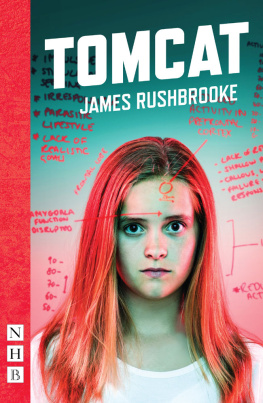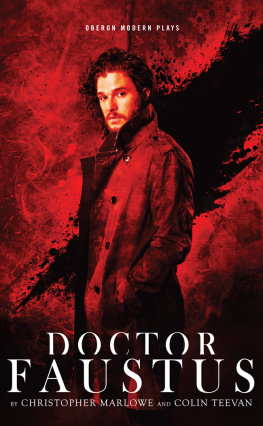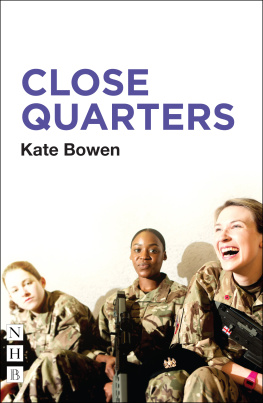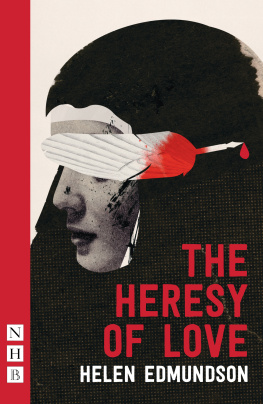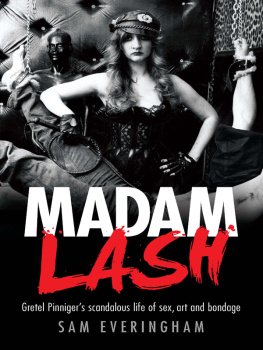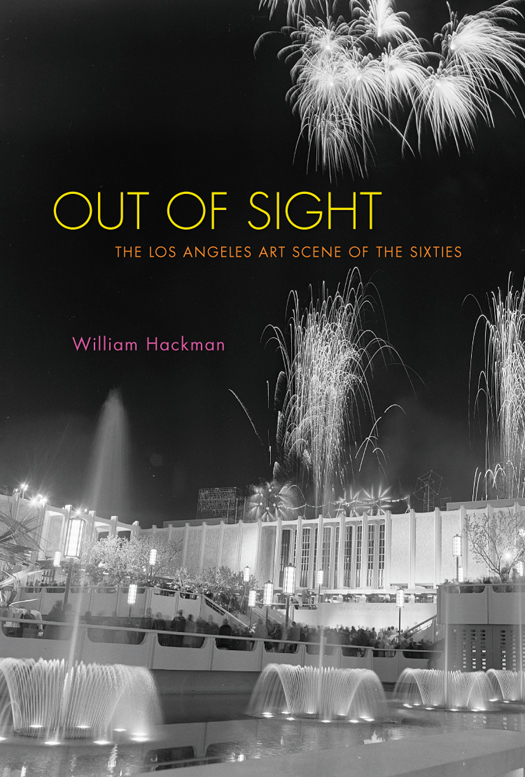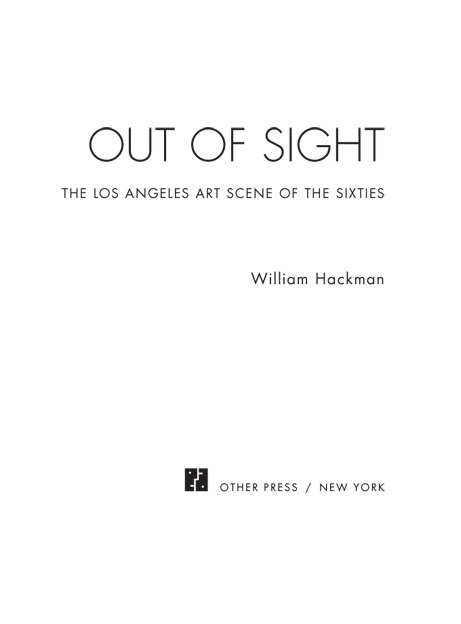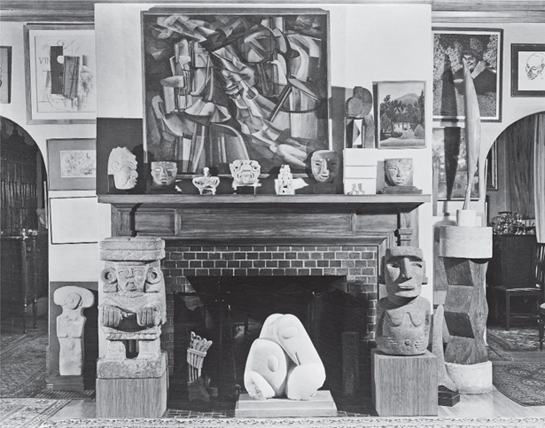PRAISE FOR OUT OF SIGHT
In Out of Sight, William Hackman deftly charts the genealogy of the citys art scene to reveal a complex network of practitioners, gallerists, and patrons, all intent on celebrating the challenging of assumptions surrounding celebrity, civil rights, site, commerce, and institutional acceptance. This book is a most welcome disruption to a body of art historical texts that privilege tried-and-true cultural meccas such as Paris and New York City.
ADAM SONDERBERG, SEMINARY CO-OP BOOKSTORES (CHICAGO, IL)
William Hackmans writing on Los Angeles in the 1960s is as full of lucidity and subtly cosmic interrogation as the art of Bengston, Ruscha, Celmins, and others that he takes as his subjects. His explanations are careful and passionate, his tone piercing and happy to challenge accepted wisdom on the artists and the city around them.
JONATHAN WOOLLEN, POLITICS & PROSE (WASHINGTON, DC)
Few books bring together soon-to-be established postwar artists like Edward Ruscha, Vija Celmins, Billy Bengston, Ed Kienholz, and Judy Chicago with the art schools, collectors, curators, and agents who shaped the culture quite as well as Out of Sight does. William Hackmans history examines the Los Angeles art scene as it transforms from a place of cultural irrelevance to one with a distinctive identity. As a former art student, I greatly appreciated Hackmans engaging approach to this fascinating period in L.A. history.
RICHARD FOX, ROSCOE BOOKS (CHICAGO, IL)
ALSO BY WILLIAM HACKMAN
Inside the Getty
Copyright 2015 William Hackman
Production editor: Yvonne E. Crdenas.
All rights reserved. No part of this publication may be reproduced or transmitted in any form or by any means, electronic or mechanical, including photocopying, recording, or by any information storage and retrieval system, without written permission from Other Press LLC, except in the case of brief quotations in reviews for inclusion in a magazine, newspaper, or broadcast. For information write to Other Press LLC, 2 Park Avenue, 24th Floor, New York, NY 10016.
Or visit our Web site: www.otherpress.com
The Library of Congress has cataloged the printed edition as follows:
Hackman, William R.
Out of sight : the Los Angeles art scene of the sixties /
William Hackman.
pages cm.
ISBN 978-1-59051-411-5 (hardback)
ISBN 978-1-59051-412-2 (e-book)
1. Art, American California Los Angeles 20th century. 2. Art and society California Los Angeles History 20th century. 3. Los Angeles (Calif.) Civilization 20th century. I. Title.
N6535.L6H28 2015
709.7949409046 dc23
2014036633
v3.1
FOR MARILYN
HAMM : And the horizon? Nothing on the horizon?
CLOV (lowering the telescope, turning toward Hamm, exasperated): What in Gods name could there be on the horizon?
Samuel Beckett, Endgame
CONTENTS
INTRODUCTION
It was very possible to entertain the future here
The living room in Louise and Walter Arensbergs Hollywood home. ()
INTRODUCTION
It was very possible to entertain the future here
WALTER HOPPS WAS AN UNLIKELY HERO for a cultural revolution. A fifth-generation Californian, Hopps grew up in Eagle Rock, a leafy and unhurried precinct of oak-lined streets, Craftsman-style bungalows, and middle-class virtues on the northeast edge of Los Angeles facing the San Gabriel Mountains. He was, by his own account, a math-science nerd who expected to follow in the footsteps of his parents and grandparents by pursuing a career in medicine. The adolescent Hopps had only a passing familiarity with the arts, some of it attained in a high-school class designed to turn college-bound science prodigies into more well-rounded students. The class readings and lectures were supplemented by field trips to local landmarks, such as the Los Angeles County Museum, known primarily for its natural history displays, and the Huntington Library, the former estate of the railway and land baron Henry E. Huntington, notable for its collections of rare books and eighteenth-century British paintings. Nothing prepared the seventeen-year-old Hopps for the strange and wonderful works he encountered one Saturday afternoon in the spring of 1949, when the class visited the Hollywood home of the collectors Walter and Louise Arensberg.
Under a canopy of tall pines and alders on a quiet hillside street, the Arensberg residence was, from the outside, an unassuming two-story affair with white stucco walls and a red-tile roof. Inside was another world. The couple had assembled one of the countrys most coveted collections of early twentieth-century European and American avant-garde art (nothing else in Southern California even came close). They had started collecting in 1913 in the wake of the International Exhibition of Modern Art in New York, better known as the Armory Show, and continued long after they settled in Los Angeles in 1927. By the time of Hoppss visit, they owned some eight hundred works of modern art and pre-Columbian artifacts, which they also began collecting in the twenties. Objects filled their house: With pictures hung from floor to ceiling and sculptures covering every conceivable surface, its rooms resembled a crowded Paris salon exhibition more than a modern collectors fashionable home. Art covered every available inch, Jules Langsner reported in ARTnews around the time of Hoppss visit. With more than two dozen first-rate works by all the major figures of the Cubist movement, the Arensbergs boasted a more comprehensive collection of the movement than most museums. Surrealism, too, was well represented, as was nonobjective art. Tables and cabinets were topped with pre-Columbian figures and bowls; larger pieces rested on the floor. The whole house, noted Vogue magazine in a 1945 photo spread, is an exciting assault on the eyes.
Room after room, masterpiece after masterpiece, an astonished Hopps navigated his way as the history of early twentieth-century modernism unfolded before his eyes. In his own tour of the Arensberg home, Langsner found it necessary sometimes to stoop and peer into a darkened corner, or stretch and twist against a reflecting light to see a fragile [Paul] Klee or attempt to perceive at two feet a huge [Jacques] Villon. In sheer numbers, two artists towered above the rest: the Romanian-born sculptor Constantin Brancusi, represented by nineteen of his exquisite forms in bronze and marble, and Marcel Duchamp, whose 1912 painting Nude Descending a Staircase (No. 2) had been a cause clbre at the Armory Show. The Arensbergs owned not only the painting that had so scandalized the public but a somewhat smaller, earlier version as well as studies for it. In all they possessed nearly forty works by Duchamp, one of the two or three greatest innovators of this century, in Walter Arensbergs view. Duchamp was also the couples good friend and principal adviser.
I was blown away, Hopps recalled of that first day at the Arensbergs. So I asked Mr. Arensberg if I could come back. He could. And he did, again and again. I thought of myself as a rational positivist. And I couldnt figure out why this seemingly nice, intelligent man had devoted his life to this collection. It was the start of a unique, and enviable, education in the history of art. Walter Arensberg spent generous amounts of time with the young man, discussing individual works and artists. Hopps soaked it all in, questioning Arensberg at length and poring over books and periodicals in the Arensbergs library. Deep in his studies one day, Hopps was startled by the appearance in the doorway of a vaguely familiar-looking older gentleman, who introduced himself as Marcel Duchamp.


